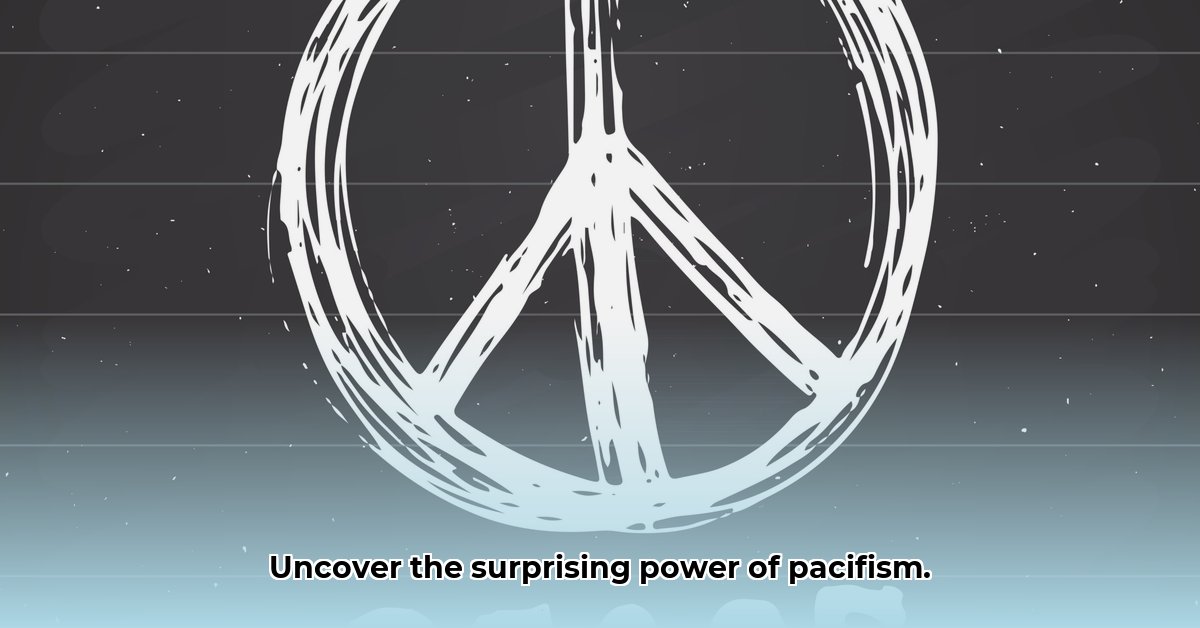
Pacifist Betekenis: Unpacking the Meaning of Peace
What does "Pacifist Betekenis" (the meaning of pacifism) truly entail? It's not a simple definition, but rather a complex and evolving concept debated for centuries across diverse cultures and belief systems. This exploration delves into the multifaceted nature of pacifism, examining its historical evolution, philosophical underpinnings, diverse strategies, and inherent challenges. We'll also explore practical applications and strategies for promoting peaceful change.
A Journey Through Time: Tracing the Historical Roots of Pacifism
Early Christianity's teachings of turning the other cheek presented a stark contrast to the Roman Empire's might, showcasing an alternative approach to conflict resolution. Mahatma Gandhi's Satyagraha (truth force) in India powerfully demonstrated the potential of non-violent resistance against British rule, proving that challenging power doesn't necessitate violence. Similarly, the American Civil Rights Movement leveraged peaceful protest to achieve momentous social change. These historical examples highlight the adaptability and enduring relevance of pacifism across cultures and time periods. Isn't it remarkable how different societies have independently found the power in peaceful resistance?
The Philosophical Underpinnings of Pacifism: Why Choose Peace?
The motivations behind pacifism are diverse and compelling. Many view it as a moral imperative—that violence is inherently wrong, regardless of context. Others focus on the devastating consequences of violence: immediate suffering, long-term damage, and the ripple effect of conflict. Economically, war diverts resources from essential services and social programs. Strategically, non-violent resistance often proves more effective in achieving long-term peace than military force. However, even within the pacifist movement, debates continue. Is passive resistance, such as civil disobedience, superior to more active, non-violent forms of protest? Is the emphasis solely on moral principles, or should potential consequences also be considered?
Diverse Paths to Peace: Exploring Pacifist Strategies
"Pacifist Betekenis" encompasses several distinct strategies. Passive resistance involves quietly refusing to cooperate with unjust systems, while active non-violent resistance actively confronts oppression through methods like boycotts or civil disobedience. Conscientious objection, the refusal to participate in military service on moral grounds, is another vital expression of pacifist beliefs. Each approach has unique strengths and weaknesses, with historical examples demonstrating their varied effectiveness in different contexts. How can we best tailor these strategies to contemporary challenges?
Navigating the Challenges: Addressing Criticisms of Pacifism
Pacifism isn't without its limitations. Critics question its effectiveness against aggressive forces, suggesting it might lead to appeasement and the perpetuation of oppression. Some view it as overly idealistic and unrealistic in a violent world. These concerns are valid and require careful consideration. The line between pacifism and appeasement is a crucial ethical debate; ensuring the effectiveness of peace efforts is paramount. However, acknowledging these challenges doesn't diminish the power and importance of pacifism as a philosophy and a practical strategy for change. How can we strengthen pacifist strategies to mitigate these risks?
Building a More Peaceful World: Practical Steps Towards Pacifism
How can we translate "Pacifist Betekenis" into action? Individuals, communities, and governments can work towards peace through diverse initiatives.
Individual Actions:
- Self-Reflection: Examine your own attitudes towards conflict and violence.
- Empathy and Understanding: Cultivate compassion and strive to understand diverse perspectives.
- Support Peace Initiatives: Contribute time or resources to organizations dedicated to peacebuilding.
Community Engagement:
- Local Initiatives: Participate in local peace initiatives and events.
- Promote Dialogue: Foster open communication and reconciliation within your community.
- Challenge Violence: Speak out against hate speech and violent rhetoric.
Global Actions:
- Advocacy: Support policies and initiatives that promote peacebuilding and conflict resolution.
- International Cooperation: Support international organizations focused on global peace.
The journey towards a peaceful world is ongoing, complex, and critically important. Pacifism isn't a simple solution, but a valuable framework for building a society that prioritizes peace and understanding. It requires continuous learning, adaptation, and a commitment to a better future. What small steps can you take today to contribute to a more peaceful world?